Abstract
Eighty five general practitioners in the Lothian region recorded information on all surgery consultations on one day in every 15 for a year. On the basis of their mean consultation times with patients the working styles of the general practitioners were described as 'faster' (n = 24), 'intermediate' (n = 40) or 'slower' (n = 21). The 21,707 consultations which they carried out over this period were defined as 'short' (five minutes or less), 'medium' (six to nine minutes) or 'long' (10 minutes or more). Independent of doctor style, 'long' consultations as against 'short' consultations were associated with the doctor: (1) dealing with more of the psychosocial problems which had been recognized and were relevant to the patient's care; (2) dealing with more of the long term health problems which had been recognized as relevant; and (3) carrying out more health promotion in the consultation. Patients also reported greater satisfaction with longer consultations. The ratio of long:short consultations was found to be 0.28:1 for 'faster' doctors as against 2.3:1 for 'slower' doctors. When doctors in either group had more heavily booked surgeries or were running late, the long:short consultation ratio fell, in some cases by over 50%. This paper suggests that the ratio of long to short consultation length for a general practitioner might become the basis of a simply proxy measure of quality of care; and that its use might help monitor the effect of recent and proposed changes in the way in which general practice care is delivered.
Full text
PDF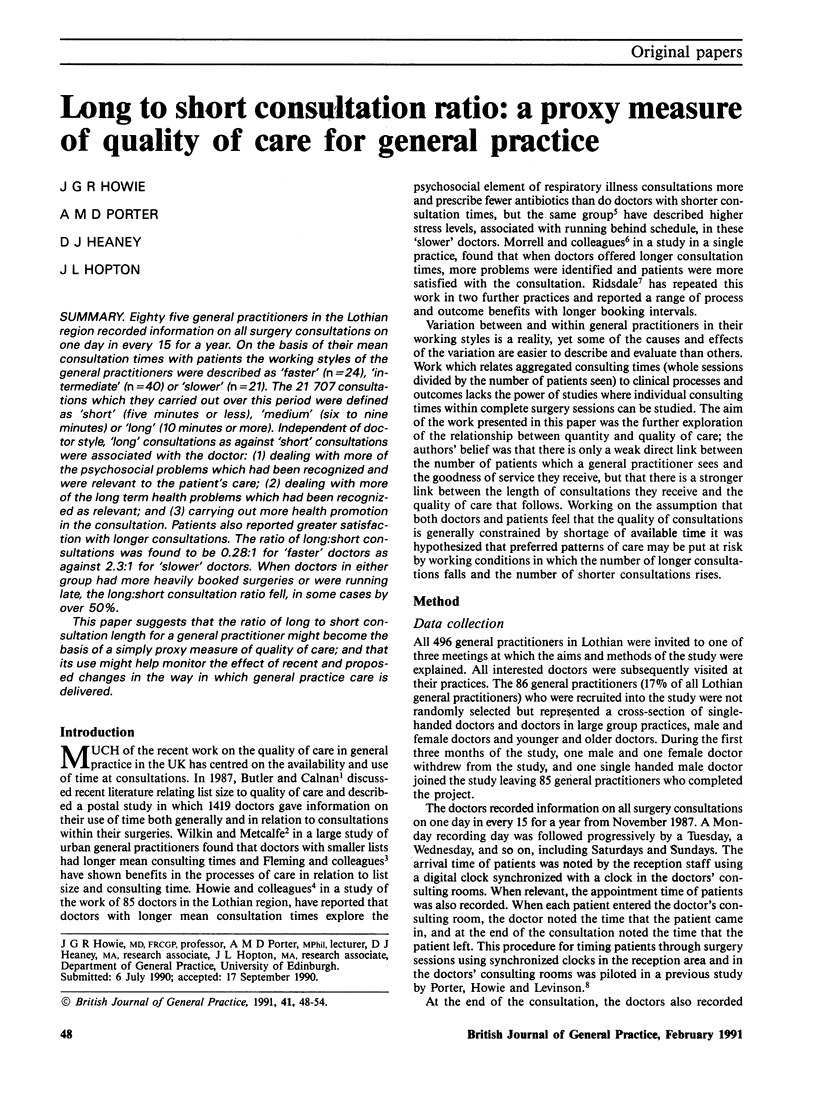
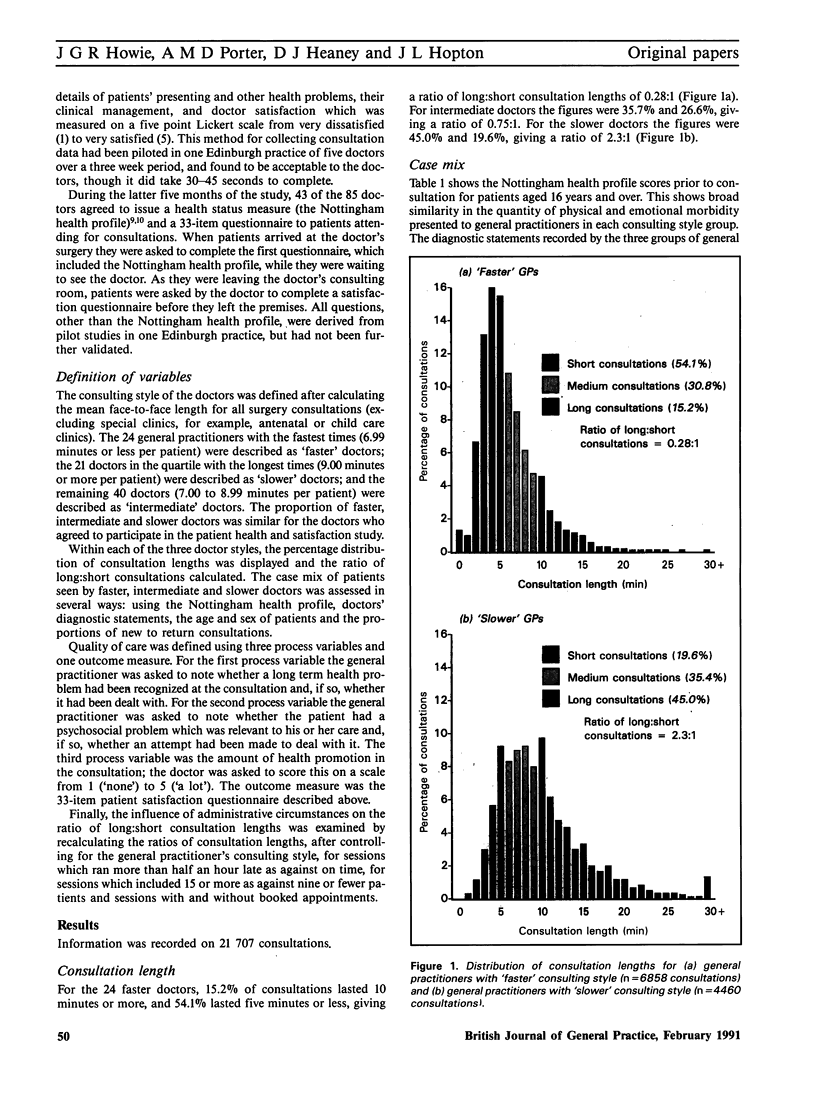

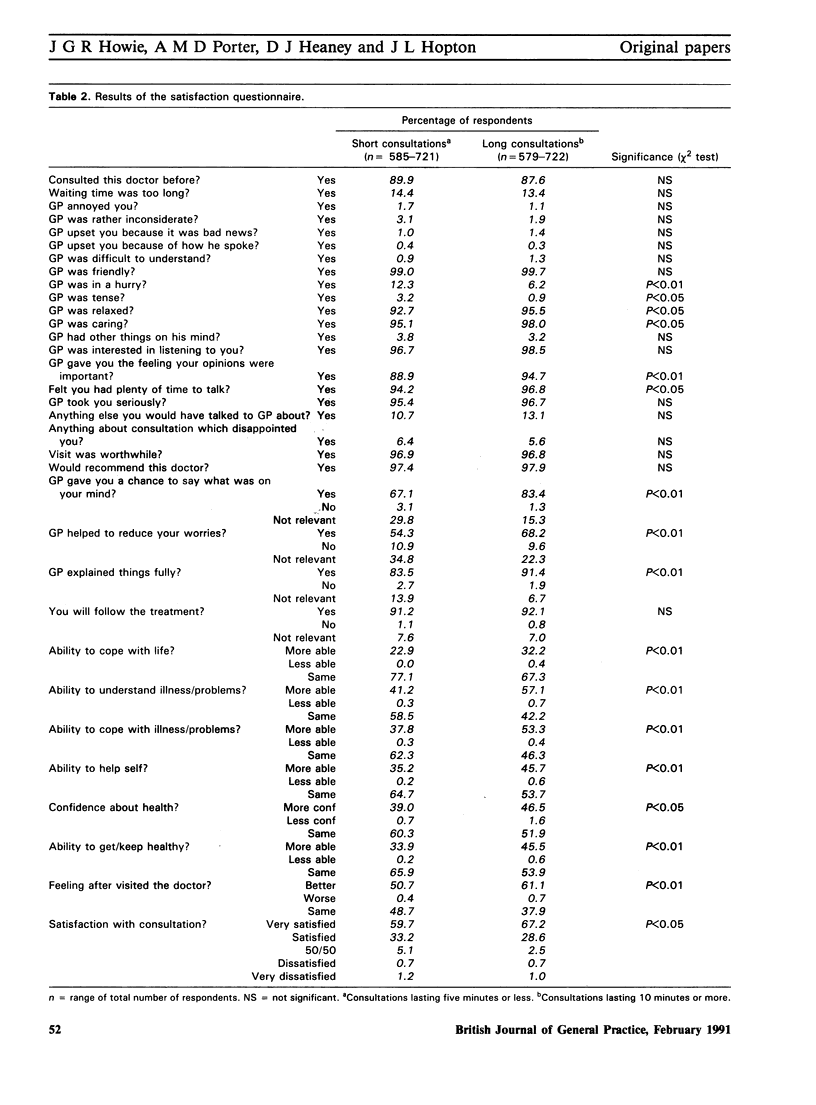
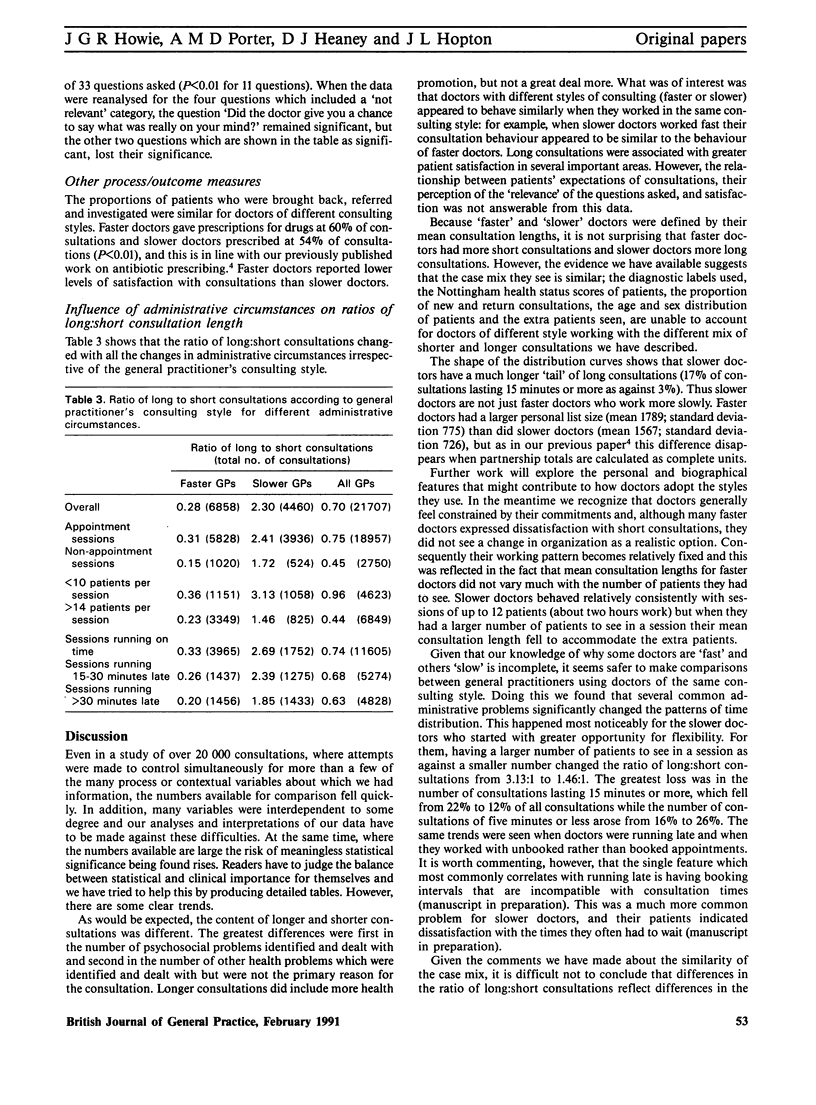
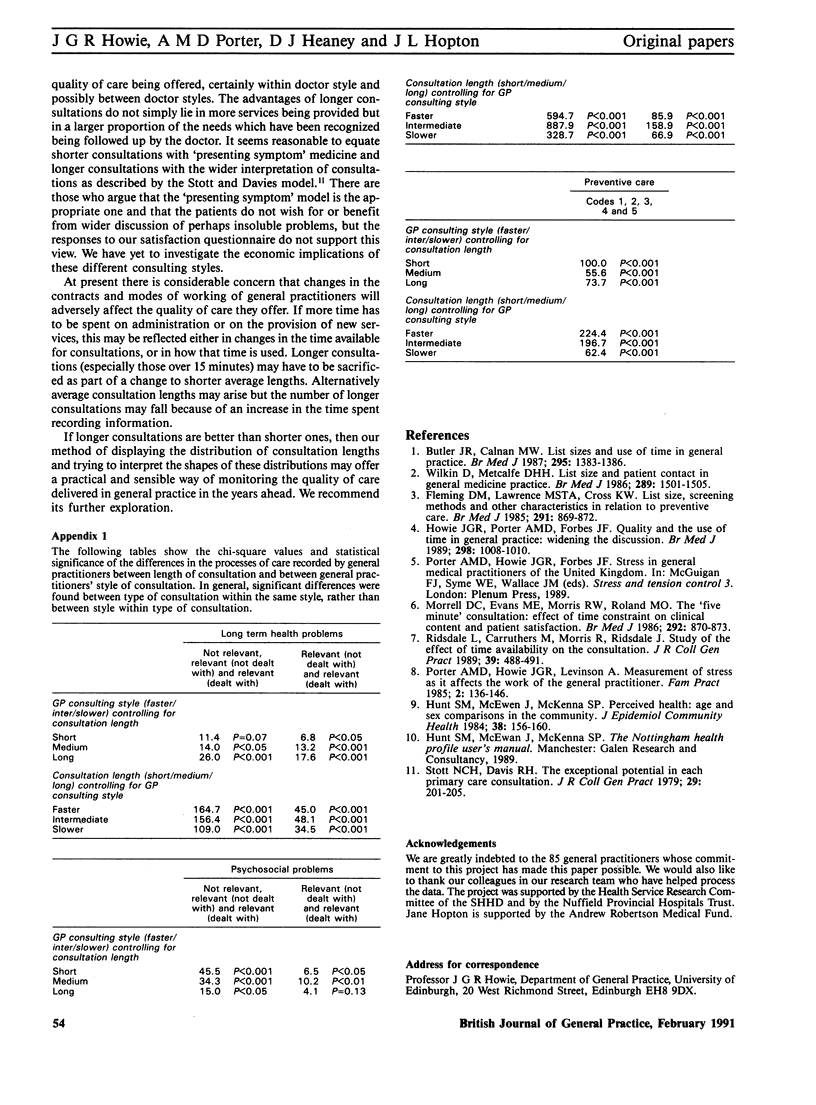
Selected References
These references are in PubMed. This may not be the complete list of references from this article.
- Butler J. R., Calnan M. W. List sizes and use of time in general practice. Br Med J (Clin Res Ed) 1987 Nov 28;295(6610):1383–1386. doi: 10.1136/bmj.295.6610.1383. [DOI] [PMC free article] [PubMed] [Google Scholar]
- Fleming D. M., Lawrence M. S., Cross K. W. List size, screening methods, and other characteristics of practices in relation to preventive care. Br Med J (Clin Res Ed) 1985 Sep 28;291(6499):869–872. doi: 10.1136/bmj.291.6499.869. [DOI] [PMC free article] [PubMed] [Google Scholar]
- Howie J. G., Porter A. M., Forbes J. F. Quality and the use of time in general practice: widening the discussion. BMJ. 1989 Apr 15;298(6679):1008–1010. doi: 10.1136/bmj.298.6679.1008. [DOI] [PMC free article] [PubMed] [Google Scholar]
- Hunt S. M., McEwen J., McKenna S. P. Perceived health: age and sex comparisons in a community. J Epidemiol Community Health. 1984 Jun;38(2):156–160. doi: 10.1136/jech.38.2.156. [DOI] [PMC free article] [PubMed] [Google Scholar]
- Morrell D. C., Evans M. E., Morris R. W., Roland M. O. The "five minute" consultation: effect of time constraint on clinical content and patient satisfaction. Br Med J (Clin Res Ed) 1986 Mar 29;292(6524):870–873. doi: 10.1136/bmj.292.6524.870. [DOI] [PMC free article] [PubMed] [Google Scholar]
- Porter A. M., Howie J. G., Levinson A. Measurement of stress as it affects the work of the general practitioner. Fam Pract. 1985 Sep;2(3):136–146. doi: 10.1093/fampra/2.3.136. [DOI] [PubMed] [Google Scholar]
- Ridsdale L., Carruthers M., Morris R., Ridsdale J. Study of the effect of time availability on the consultation. J R Coll Gen Pract. 1989 Dec;39(329):488–491. [PMC free article] [PubMed] [Google Scholar]
- Stott N. C., Davis R. H. The exceptional potential in each primary care consultation. J R Coll Gen Pract. 1979 Apr;29(201):201–205. [PMC free article] [PubMed] [Google Scholar]
- Wilkin D., Metcalfe D. H. List size and patient contact in general medical practice. Br Med J (Clin Res Ed) 1984 Dec 1;289(6457):1501–1505. doi: 10.1136/bmj.289.6457.1501. [DOI] [PMC free article] [PubMed] [Google Scholar]


